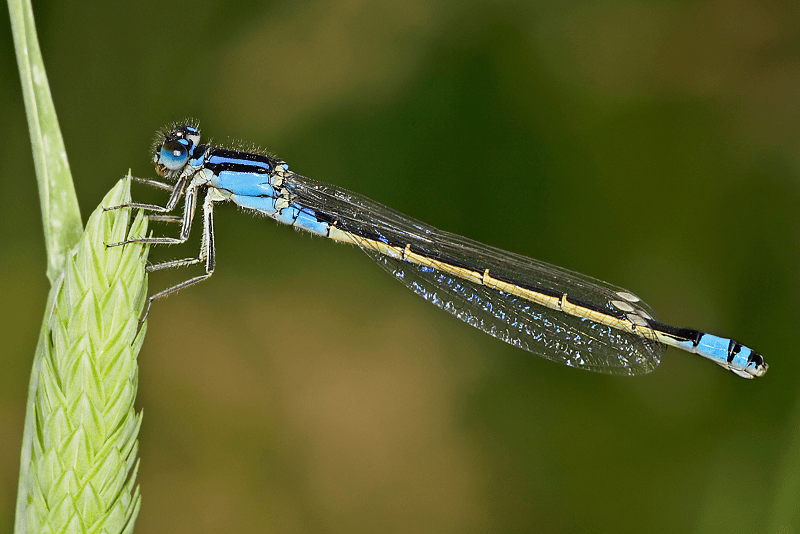Damselfly Facts
- The Damselfly serves as the name of an insect of the order Odonata. Physiologically, it remains very similar to numerous varieties of dragonfly.
- The primary difference between various dragonflies and it, however, is the wings. In most species of this beautiful insect, the wings stay held parallel to the body.
- This does not happen with most dragonfly varieties.
- This stunning invertebrate generally remains a weaker flier than its lookalike. Additionally, it also develops a rather distinct difference in the nature of the eyes.
- The dragonfly possesses compound eyes while the eyes of this insect stay separate in nature.

Damselfly Physical Description
Given that Damselfly represents the collective name of numerous species within a suborder, physical appearances can vary significantly between them.
However, certain similarities remain. The general body shape remains much thinner and elongated in comparison with the dragonfly.
Additionally, the eyes typically develop as both smaller in size, and further separated than those of its genetic cousins.
These invertebrates display sexual dimorphism in regards to coloring. Males usually display bright colors, varying between species, while the females remain duller in color.
- Kingdom: Animalia
- Phylum: Euarthropoda
- Class: Insecta
- Order: Odanata
- Suborder: Zygoptera
Damselfly Distribution, Habitat, and Ecology
The visually stunning Damselfly inhabits every continent except Antarctica. The various species inhabit a wide range of specific habitats.
The invertebrate undergoes an incomplete stage of metamorphosis including an aquatic stage for its nymphs. The eggs are laid either underwater amid vegetation, or other spaces filled with water. These may include locations as bromeliads in trees.
The nymphs are carnivorous and voracious, and primarily consume tiny aquatic organisms such as mosquito larvae. The adult Damselfly feeds on numerous small insects, such as mosquitoes and flies.
Several of the larger tropical species are famous for preying on small spiders. These will actually hover near the web and pluck the spider out of its own web. Poor spider.
Check out our other articles on 3 Wonderful Woody Shrubs of Australia, Dakota Skipper, Hines Emerald Dragonfly, Red-Veined Darter, Crane Fly











Leave a Reply